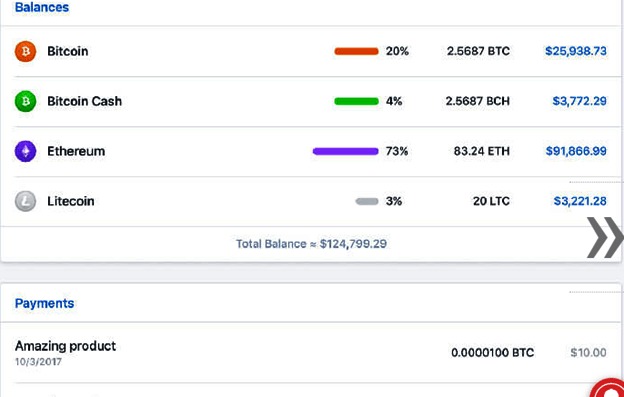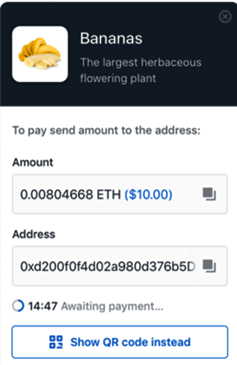Coinbase, a company which has served as an exchange marketplace to enable users to procure cryptocurrencies using fiat currency, has come up with another groundbreaking product. This new product is Coinbase Commerce, which has been created as a solution to enable merchants all over the world to accept payments in specific cryptocurrencies for their goods and services online. The acceptable cryptocurrencies for such transactions will be Bitcoin, Ethereum, Bitcoin Cash and Litecoin.
This service will provide an expanded cryptocurrency payment acceptance function for merchants than the recently launched LitePay, which is a similar service that allows merchants to accept e-commerce payments exclusively with Litecoin.
Without further ado, let’s delve into Coinbase commerce review.
What is Coinbase Commerce?
Coinbase Commerce is a service which will allow e-commerce merchants offer a globally accessible and acceptable payment solution that is not fiat-currency based. Cryptocurrencies fit this bill perfectly.
By offering this payment service which can be accessed by everyone across the world, Coinbase is creating a financial system which is open to all. The service offered by Coinbase Commerce will allow every merchant on the platform to exercise full control over their cryptocurrencies. All wallets that will be used for transactions will be user-controlled.

Crypto payment options on Coinbase Commerce
Coinbase Commerce comes with a checkout button which can direct a user to the vendor’s existing checkout flow. It can also be added on its own as a different payment option on an e-commerce platform.

Checkout page on Coinbase Commerce
The sign-up process is easy, requiring just the merchant’s email, phone, and a few other details. Coinbase Commerce is promising to integrate with some existing multi-channel e-commerce platforms.
How will Coinbase Commerce Affect the E-Commerce Industry?
The discussion today focuses on how the Coinbase Commerce e-commerce offering will change the industry as we know it.
To understand what the introduction of this new service will mean to the e-commerce industry, it is important to look at the present state of the e-commerce industry from various perspectives and to understand how Coinbase Commerce will change things.
E-Commerce from the 90s to Date
While e-commerce took off in the 90s, especially with the market entry of PayPal, it was slow to take off in many countries which are today classified as the emerging markets. One of the biggest problems that e-commerce had in this time period was that of payment inclusion.
The global fiat currency system is heavily centralized, with a lot of controls being exerted at the central bank level and also at the levels of global financial institutions.
Entire regions were locked out of the global financial space as a global clampdown on illicit money flows and terrorist financing began soon after the September 11, 2001 attacks, making adoption of e-commerce as a way of doing business in these regions impossible.
So while PayPal gained a massive adoption as a way of paying for items online in the Western world, users and merchants in the emerging markets were excluded, thus hampering the growth of e-commerce in these regions.
A few years ago, PayPal began opening up its e-payment platform to include some of the countries originally locked out of it, but with only a functionality to send payments and not receive them.
So while users in these countries can shop online and pay with PayPal, opening an e-commerce business using PayPal to accept payments is still out of the question.
E-commerce from 2018: How Coinbase Commerce Will Define the Future
The adoption of cryptocurrencies as a medium of e-commerce exchange in itself is a game-changer because this bypasses all existing controls being exerted over the global payment system by central banks and global finance agencies.
But by offering a fiat-crypto exchange platform, which can then be used as a facilitating tool for procuring cryptos for e-commerce transactions and exchanging crypto payments for fiat currencies, Coinbase has taken things to a whole new level.
The biggest e-commerce problem that is solved by Coinbase Commerce is that of payment inclusion. Anyone anywhere in the world can get access to Bitcoin, Ethereum, Litecoin or Bitcoin Cash, and use this to buy products or services online without having to go through a fiat currency intermediary.
Anyone anywhere in the world can also sign up with Coinbase, and start accepting e-commerce payments, subject to fulfillment of KYC requirements.
E-commerce is not only for the buyers and the merchants. It also includes the shipping and logistics ecosystem as well. Coinbase Commerce looks likely to create a door for more logistic/shipping solutions to come into space, which could potentially challenge the shipping/logistics giants that presently dominate the market.
Concerns
While the introduction of the Coinbase Commerce e-commerce crypto payment system is a welcome development, there are a few concerns on how this service will cope with some inherent deficiencies within the cryptocurrency space itself. Some of these concerns are as follows:
1.Transaction Costs
One major concern that vendors and users alike will have about the use of cryptocurrencies as a means of payment on Coinbase Commerce will be the issue of cost. Coinbase has not released the schedule of transaction fees that will be incurred for integration as well as usage by end-users.
Usage of Bitcoin has become bogged down by issues regarding increased transaction processing times and rising transaction costs. While solutions such as Lightning are being developed to tackle the issue of processing speeds, not much has been done to combat the rising cost of using Bitcoin for transactions.
2.Volatility and Pricing
The issue of what will be paid to process a transaction also has a direct bearing on the next concern, which is that of the volatility of the cryptocurrencies and the impact it will have on the pricing of items on e-commerce websites.
Fiat currencies tend to have some bit of stability, with price movements of currencies occurring in pips, which are actually 1/1000th of the value of a single unit of currency. So while a fiat currency that moves 100 pips in a day will only have moved by a factor of 0.01 units, cryptocurrencies tend to move in whole numbers.
For instance, the value of Bitcoin can rise or drop by as much as $2,000 in a single day, which is almost 200,000 times the average daily movement of the most liquid fiat currency pairing (EUR/USD). How do vendors who accept cryptocurrency payments on Coinbase Commerce price their goods in response to such massive volatility?
These are genuine concerns. US-based payment processor Stripe ended its online processing of Bitcoin payments in 2017, stating that Bitcoin was better suited as a traded asset than as a medium of exchange.
So how will the e-commerce space handle the volatility of Bitcoin and the three other altcoins to be used as the payment instruments on Coinbase Commerce e-commerce platforms? Perhaps these questions will be answered when the Coinbase Commerce service starts to gain sufficient traction in the coming months.
Hope this Coinbase commerce review gave you a clear idea about this new method of digital currency payments.Let us know in the comment section below.
Featured image by Coinbase Commerce